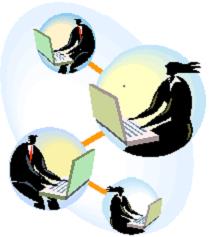Part 2: During Product Creation
By Anna Pasupathy
 With razor-sharp focus on core product value and ample infrastructure built around it to win the customer’s heart, Voila! The expert team has constructed a skeletal product. Staging the product at this time requires utmost care since missing any major element poses a risk to the product’s survival. Do not set the stage if the product is not ready.
With razor-sharp focus on core product value and ample infrastructure built around it to win the customer’s heart, Voila! The expert team has constructed a skeletal product. Staging the product at this time requires utmost care since missing any major element poses a risk to the product’s survival. Do not set the stage if the product is not ready.
The conceived product idea previously validated is now demonstrated to show its usefulness to the customer. Identify and engage the customer that is interested and can greatly benefit from your product. Doing this with more than one customer enhances your survival rate (it may also dilute or strengthen your customer attention). Reveal your product to gauge their response. Does it excite them, do they see the potential value in your product, did you deliver on what you told them?
 The product demo must be given by a technical person who is involved in the product team, and thoroughly knows the product value and its history. He or she must have built a relationship, and have credibility with the customer. The ‘Product Manager’ or a ‘Solutions Engineer’ who knows the customer environment, the problem that it solves for them, the technology and the price point is the best fit.
The product demo must be given by a technical person who is involved in the product team, and thoroughly knows the product value and its history. He or she must have built a relationship, and have credibility with the customer. The ‘Product Manager’ or a ‘Solutions Engineer’ who knows the customer environment, the problem that it solves for them, the technology and the price point is the best fit.
With challenges deploying the product in customer environment (which is normally outside your general access), prior experience and exposure to a variety of products is beneficial. Both technical and problem solving skills enhance powerful solution. Entertain, solicit and consider all positive and negative ideas and feedback from the customer. Educate the customer if needed. This sets the stage for delivering the core value of your product, and eases the next decision point in engaging this customer.
 Next step is applying your product in the customer’s environment through field trials and beta testing. Using this experience is an effective way to refine and clarify product features in your road map. A cohesive team with good chemistry is critical to capture the beta trial inputs and deliver the required product. Once the customer is won over by the product effectiveness, it’s time to start working on a business agreement.
Next step is applying your product in the customer’s environment through field trials and beta testing. Using this experience is an effective way to refine and clarify product features in your road map. A cohesive team with good chemistry is critical to capture the beta trial inputs and deliver the required product. Once the customer is won over by the product effectiveness, it’s time to start working on a business agreement.
Now that the first customer has confirmed product viability, the product is introduced to a broader customer base. Despite the focus required in the initial stage, you always build a longer road map with a bigger list of potential customers identified during market analysis. The company has to strategically harvest this next set of customers to learn their environments and needs at the technical level to make its product useful to them at the right price point. All this has to be done in parallel while engaging the first customer.
The product that was developed with a keen focus in a limited area, now has to be applied to a variety of environments. In general, the amount of variations needed in the product will be small if this second set of customers is in the same domain or vertical. With the strategy and road map for the second set of customers in place, use the first customer as the reference to build confidence with your second set. Constantly monitor this customer list, and uniquely identify the right moment to approach them with an appealing solution ahead of your competition.
Key Takeaways:
- Stage your product with a punch that wins over your customer
- Effective communication between the customer and product team is critical during product trial
- Expand in the same domain to gain market leadership.
Stay tuned for more on Growing your product’s market in Part 3…
Anna Pasupathy is an engineer in Software and Communication industry, and has worked for start-ups and big companies. She can be reached at annapasupathy@gmail.com.